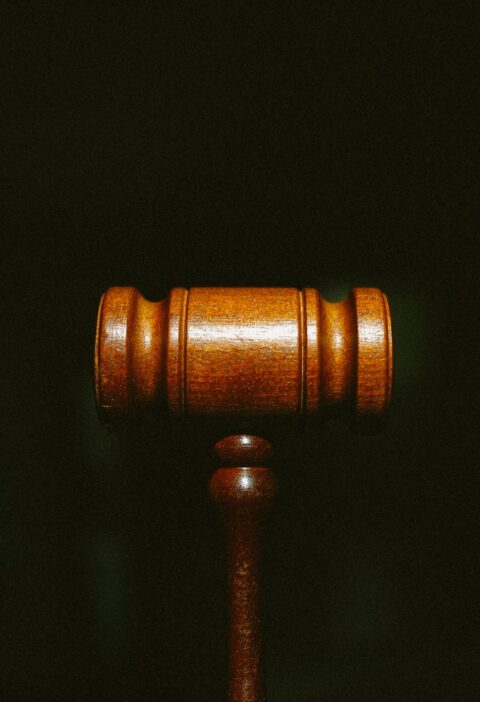Did you get into a car crash?
You can sue the other driver if you’ve been in an accident and it wasn’t your fault. Remember that once you sue, you’re taking on the other driver and their insurance company, which means you’ll be in a legal dispute with them.
That said, it’s wise to consult a lawyer before you make that call. They’ll lead the charge and hash out your compensation with the other driver’s insurance company.
Keep reading for a basic primer on how to sue after a car accident.
Seek Medical Attention
After a car crash, your health and safety should come first. Even if you think your injuries aren’t too bad, you should immediately see a doctor. Accident-related injuries might not hurt immediately, and waiting to get help could worsen your situation.
Also, getting medical help immediately makes it clear that your injuries are related to the accident, which can be important if you file a lawsuit. Medical records, evaluations, and treatment plans that doctors and nurses give you are important proof of how the accident has affected your health.
Gather Evidence
At the scene of the accident, you should try to gather proof that could help your case. Use your phone or a camera to take pictures of the accident scene from different angles and in detail.
Take pictures of where the vehicles are, the damage, skid marks, the road, the weather, and any related traffic signs or signals. These visual clues can help figure out what happened before the accident.
Also, write down or record a statement about what happened while it’s still fresh. Find out how to get in touch with any witnesses who were at the scene. Their stories can give you important information to support your version of what happened.
Police Report
Ask for a copy of the police record if law enforcement comes to the accident scene. This document has important facts about the accident, such as the names of the people involved, what they said, and what the officer saw. The police report can be used as an unbiased record of what happened. It can give helpful information during insurance claims and possible court cases.
Exchange Information
After ensuring everyone is safe, give the other person involved in the accident your contact, insurance, and driver’s license information. This conversation helps set up clear contact lines for insurance claims and any legal actions that may follow. Ensure you correctly write down the other person’s information and give them yours to speed up the claims process.
Notify Insurance Companies
Even if you think the other person caused the crash, you should tell your insurance company immediately. Help out completely and tell the truth about what happened. Your insurance company will help you file a car accident claim, determine how much damage there is, and tell you what to do next.
Document Injuries and Treatment
Keep careful records of every part of your care as you get medical help for your injuries. This paperwork goes beyond hospital bills and costs for treatment. It includes medical reports, diagnoses, treatment plans, prescription receipts, and any other contact you have with healthcare professionals.
By keeping a detailed record, you can fully understand how the accident has affected you physically and emotionally. This paperwork proves that you were hurt and cost you money. This can be very important during negotiations or legal processes.
Consult an Attorney
When considering legal action, consulting a personal injury attorney with expertise in car accident cases is essential. An experienced attorney can review the specifics of your case, help you understand your rights, and offer insight into the potential strength of your claim.
They can also guide you in conversations with insurance companies, ensuring you don’t inadvertently undermine your case. If you’re unsure about your next steps, don’t hesitate to call this personal injury attorney.
Negotiation and Settlement
Your attorney will likely negotiate with the other party’s insurance company to reach a settlement. This process involves presenting evidence of your damages, including medical bills, property repair costs, lost wages, and non-economic damages like pain and suffering. Through skilled negotiation, your attorney will work to secure a fair settlement that adequately compensates you for your losses without needing a trial.
Filing a Lawsuit
If negotiations with the insurance company don’t result in a satisfactory settlement, your attorney might recommend filing a car accident lawsuit. This involves drafting a formal legal complaint that outlines your claims against the responsible party. The complaint will detail the facts of the accident, the extent of your injuries, and the damages you’re seeking.
Discovery Phase
After a lawsuit is filed, both parties enter the discovery phase. Each side gathers evidence, interviews witnesses, and exchanges relevant information during this stage. This process is meant to ensure transparency and allow both parties to understand the strengths and weaknesses of their cases.
Mediation or Pretrial Negotiations
Before the case goes to trial, there might be attempts to resolve the dispute through mediation or further settlement negotiations. A neutral third party (mediator) helps facilitate discussions between you and the opposing party to find a resolution without going to trial.
Trial
If mediation or pretrial negotiations fail, the case proceeds to trial. A trial involves presenting your case before a judge and possibly a jury. Both sides present evidence, question witnesses, and make arguments. The judge or jury then makes a decision based on the evidence presented.
Verdict and Judgment
After the trial concludes, a verdict is reached. If the judge or jury rules in your favor, you will receive a judgment outlining the compensation you are entitled to. The judgment may cover medical expenses, property damage, lost wages, and non-economic damages like pain and suffering.
Unveiling How to Sue After a Car Accident
How to sue after a car accident? Suing after a car accident is a very demanding process.
Still, with the proper guidance and research, one can get the desired outcome. After assessing the severity of the situation and injuries, take the necessary steps to document, follow up, and file a case.
With these tips, go forward and protect yourself and your rights. Don’t forget to seek legal services if needed. Start now to gain the justice you deserve.
If you enjoyed it, be sure to check out our blog for more valuable information and resources.







